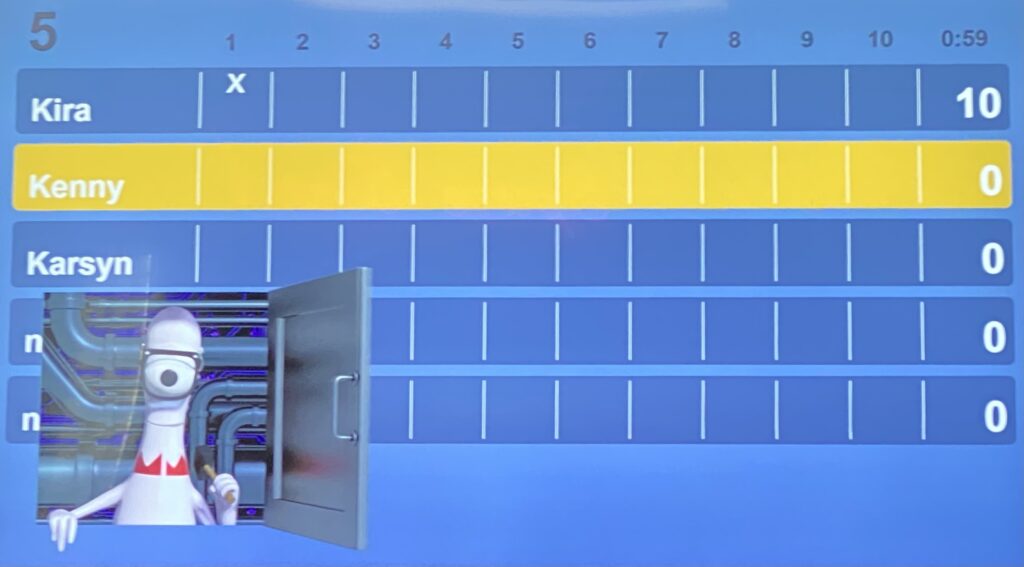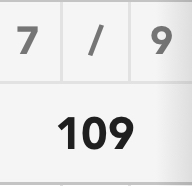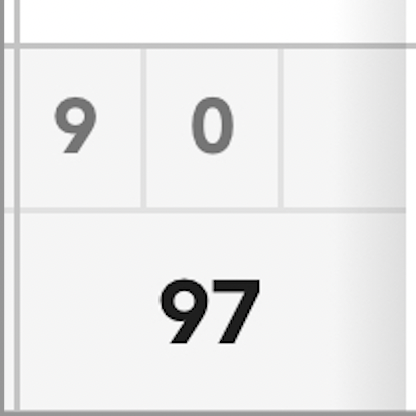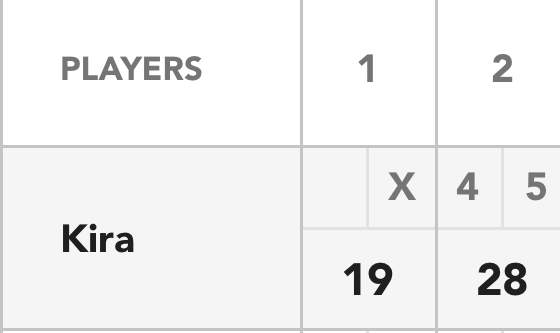
As a beginner bowler, you’ve got lots of questions, which is understandable. The game is full of nuances that take some time to familiarize yourself with.
One of the most common questions new bowlers ask about the sport is, “How many frames are in a game?” In this article, we’ll not only answer that question, but we’ll fill you in on the structure of a bowling match so you can play more confidently.
Contents
How Many Frames Are in a Game of Bowling?
According to the British Tenpin Bowling Association (BTBA), a typical ten-pin game of bowling consists of ten (10) frames. Each player bowls for ten frames and tries to rack up as many points as possible.
Occasionally, the player may not be able to knock down all the pins in the lane during their two (or three) tries. If all the pins aren't knocked down, they get points equal to the number of pins knocked down. When pins remain, it’s referred to as "open frames."
What is a Frame?
When it comes to bowling, a frame is essentially a “turn.” In a typical ten-pin bowling frame, a player has the chance to roll the ball twice in an attempt to hit all ten pins.
On the bowling scorecard, a frame is shaped like a big square and has two small boxes in the upper right corner. These two boxes are where each throw's score will go. The total for each frame is below the smaller boxes.
If they manage to knock them all down on their first roll, they get a strike, an "X" in the first box.
If there are pins still standing at the end of their first roll, they can roll again to try to knock down the rest of the pins. If they’re successful, it’s called picking up a spare.
Frames (or turns) only last as long as the player hasn't knocked down all the pins (but up to 2 rolls). Once a player knocks down all the pins or exhausts their two (2) rolls, the frame is over.
There’s one exception: the tenth and final frame in a bowling game is a little different. Instead of getting two chances to knock down all the pins, each player can earn a third chance. The third roll gives the player an additional chance to clear all the pins from the lane (more on this later on in the article).
How Long is Each Frame?
The length of time for each frame is different. Each bowler is different, but a frame usually takes about a minute if you're at a modern bowling alley. During a frame, a player will usually:
- Grab their ball from the ball return.
- Set up to roll.
- Roll the bowling ball.
- Bowler knocks down pins for points.
- Wait for the pinsetter to clear the fallen pins.
- Set up to roll again.
- Roll again to try to pick up a spare (if they didn’t knock down all the pins on their first roll).
A typical bowling game usually lasts about twenty minutes with two players (ten minutes per player). This time estimation doesn't include breaks for drinks or food, or players wondering off when it's not their turn.
Inexperienced bowlers might take a bit longer to complete their frames and get the hang of things. If it's your first time at a bowling alley, you may be looking at anywhere between thirty minutes and an hour for your first game.
Bowling isn't always a one-player sport; the more people there are on a lane, the longer the game is likely to last. For example, bowling with three other players might take as long as forty minutes with regular, experienced players or up to an hour and a half with inexperienced players.
Extended Frame in Bowling (The Tenth Frame)
Earlier it was mentioned the final frame in bowling is a bit longer than the other nine frames, allowing for three possible rolls instead of two.
When a player scores a strike with their first ball of the tenth frame, they have the chance to complete a third roll to see if they can score bonus points.

If the player doesn't score a strike on the first roll of the tenth frame, they can still roll a second time to pick up the spare. If they succeed in picking up the spare, they get a chance to score extra points from their third roll.

Remember, if any pins remain, it's considered an open frame. For example, the bowler knocks down nine pins. On the second ball, they roll the ball into the gutter. The minimum score they will get for their second roll is zero. They do not get a third roll. Their total points bowled for tenth frame is nine.

If the player rolls a strike on the first roll of the tenth frame and gets strikes on the next two rolls, they’ll secure the maximum number of points possible for the frame. Bowling three strikes in a row is called a Turkey.
How Many Rolls are in a Frame?
A frame consists of one or at most two rolls in frames one through nine, regular frames. In the tenth and final frame, they’ll get up to three rolls.
The fewer rolls you require in a regular frame, the better the frame is going for you.
Strikes are much more valuable to a bowler than spares. But picking up spares keeps the score competitive. Your goal should be to knock down as many pins as you can in a single roll.
Bowling Scores: How Many Points Are in a Perfect Game?
In bowling, scoring is a bit complicated, especially for beginners. If you don't knock down all the pins after your second throw in a frame, your score will reflect how many pins you've knocked down.
If you manage to knock down all the pins on your second roll, you get a spare, which earns you 10 points plus the number of pins you knock down on your next roll.
When you strike on the first roll, strikes earn you 10 points plus the number of pins you knock down on your next two rolls. So, for example, if you scored a strike in frame one, 10 points, your total score for frame one would include both rolls from frame two, 4 points on the first roll, and 5 points on the second roll. This gives a total score of 19 for the first frame.

Likewise, three strikes in a row will earn you ten points for the first strike and an additional twenty for the two strikes that followed, which is 30 points for that first frame where you made the strike.
When a bowler bowls a perfect game, they’ll earn 300 points. In order to do that, they’ll need to bowl a strike 12 times in a row – nine times in the first nine frames and three times in a row in the tenth and final frame. Most bowlers will never bowl a perfect game, as it takes a ton of skill and a load of luck to accomplish multiple strikes. But it doesn’t hurt to strive for it!
What's a Good Bowling Score for a Beginner?
We've seen the maximum score for a bowling game, but if you're a beginner just starting out, how many points should you strive for? On average, a beginner should try to score between 70 and 100 points in their first games as they get used to the ball and how to throw it correctly. Once you've got the hang of the game, you might average 150-175 points per game, which would be a relatively good competitive bowling average.
If you've been bowling for a while and can't seem to cross the 100-point mark, that’s a sign that you might need to work on your technique. Elements like the force of the throw and wrist movement both play a huge part in how you ultimately do. If you're playing for fun, scoring less than 100 points isn't a big deal. However, if you're looking to join a bowling team, you might want to consider sharpening your skills for competitive play.
Related Articles
Play for Fun
Whether you're bowling casually with the guys or gals after work or rolling some on weekends for a competition, the critical thing is to have fun. Bowling is a sport that's more fun with others, and learning from those more experienced than you is an excellent way to approach it. While you can take competitive bowling seriously, you should still remember to have fun and relax. That's the key to enjoying the game.
Kira Byrd, a Certified Fraud Examiner, holds a B.S. in Accounting from the University of Alabama at Birmingham. With a passion for bowling from her childhood, Kira has poured her expertise and personal experiences into creating and nurturing Bowling For Beginners. Kira's mission is to meet new bowlers where they are and guide them toward consistently achieving higher scores. With a focus on skill development and strategic techniques, she empowers readers to take control of their game and unlock their true potential.
Bowling For Beginners embodies strict editorial integrity, ensuring reliable and unbiased information. Kira's commitment to delivering valuable insights and practical strategies is reflected in every article. Here's an explanation of our editorial policy and how we get money.





